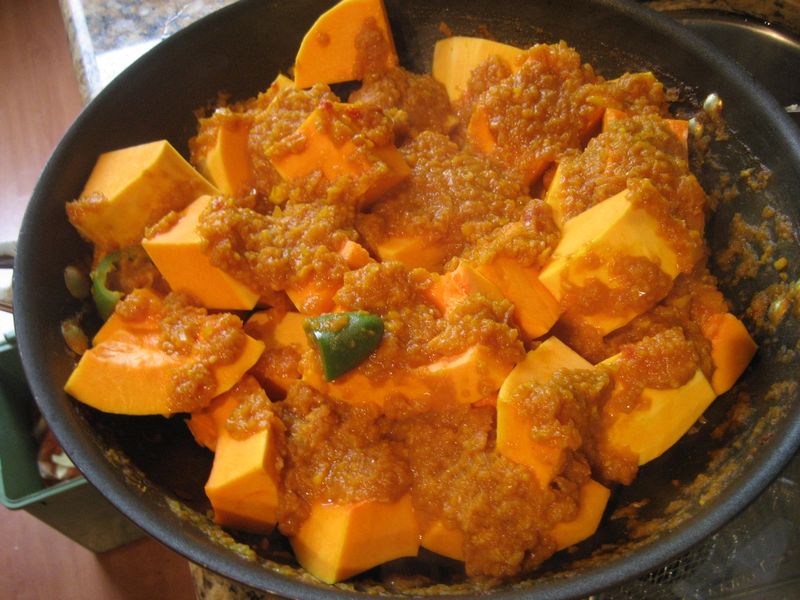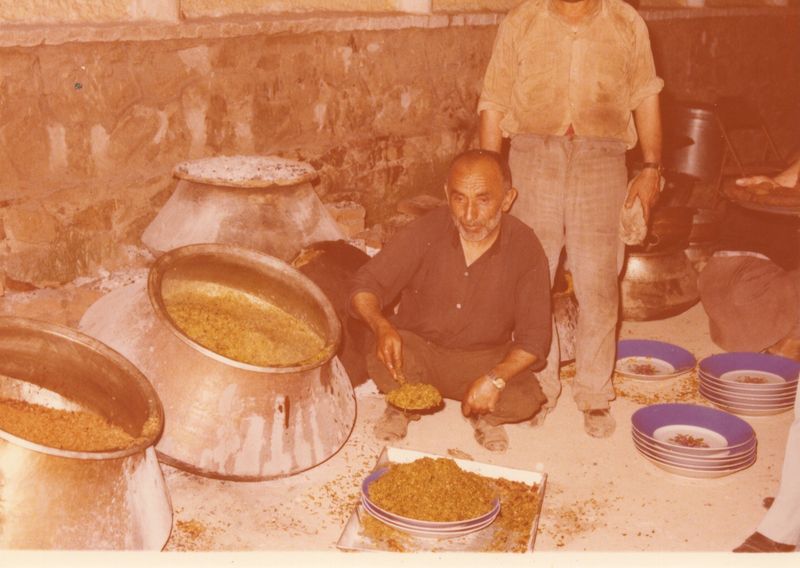By Humaira
Honestly, I don't remember having Kadoo growing up. Perhaps it was that I didn't like the sweet and savory taste, or that it's not the quintessential Afghan dish like Palau or Qorma. However, every American I meet who has had Afghan food raves about Kadoo. Over the past couple of years I have also become a fan.
Kadoo is pumpkin braised with ginger and onions, and served with yogurt. Although the word Kadoo means pumpkin in Dari (the most common Afghan dialect), my mom, Jeja, and her friends have found butternut squash to be a more reliable option. Pumpkins have a shorter season and it's not always clear which varieties will be tasty. However, in an article Katie wrote for the San Francisco Chronicle she demystifies pumpkin selection for the Kadoo dish.
In some Afghan restaurants Kadoo is served with a meat sauce (kofta) but I prefer the vegetarian version. It tastes best with a piece of toasted pita bread or warm nan.
Sweet and Savory Pumpkin with Yogurt
Borani Kadoo
1 large yellow onion, peeled and pureed in a food processor, or finely chopped
¼ cup olive oil
2 medium butternut squash, peeled, seeded and cut into 3-inch chunks
3 cloves garlic, peeled and minced make 1 tbsp
1 small jalapeno pepper, halved, seeded and diced
1 tbsp. tomato paste
1 tbsp. ground turmeric
1 tbsp. fresh ginger, peeled and diced
¼ cup sugar
1 ½ to 2 cups chicken or vegetable broth
Yogurt sauce (recipe below)
Heat the oil in a 14-inch sauté pan or large casserole over medium heat. Add the onion and sauté until tender and golden brown, about 15 minutes. Once the onion is tender, add the garlic, jalapeno, tomato paste, turmeric, ginger, sugar and 1 ½ cups of broth. Stir and bring to a boil. As soon as the mixture boils pour the sauce in a bowl.
Arrange the squash pieces tucked snugly in the same pan. It’s o.k. if the pieces overlap somewhat. Pour the sauce over the squash, cover with a lid or foil and simmer over low heat. Every few minutes, gently move the squash around so all the pieces cook evenly and the bottom of the squash doesn’t burn. Add more broth if the pan gets dry. Cook until the squash is fork-tender but doesn’t lose its shape (30 to 40 minutes).
To serve, arrange the pumpkin in a large shallow bowl. Spoon the yogurt sauce over the pumpkin and pour any remaining yogurt around the outside edges of the pumpkin. Serve with nan or pita bread.
Yogurt Sauce:
1 cup yogurt
1 ½ tsp. dried garlic
1 tsp. salt
In a small bowl, mix together the ingredients.
Serves 4 to 6
002
Cut squash, best to peel, cut in half, remove seeds and cut in small pieces.
006
Squash covered with sauce, ready to cook.
Except where otherwise noted, all content on this blog is licensed under the Creative Commons Attribution-NonCommercial-NoDerivs 3.0 Unported license.






